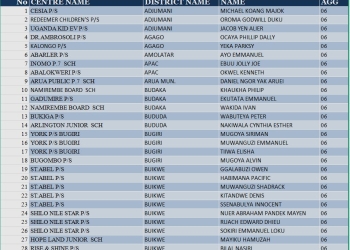
The Ministry of Finance has released the Second Budget Call Circular for the 2025/26 financial year, revealing that the government plans to reduce its expenditure to UGX 66.065 trillion, marking a UGX 6.049 trillion decrease from the 2024/25 budget of UGX 72.136 trillion.
The circular, issued by the Secretary to the Treasury, Ramathan Ggoobi, on 13th February 2025 to all accounting officers, outlines that Uganda Revenue Authority (URA) is expected to collect UGX 35.693 trillion in taxes, up from UGX 32.097 trillion in the 2024/25 fiscal year. The remaining portion will be raised through borrowing and grants from donors.
The Budget Call Circular also details the government’s growth strategy for FY 2025/26, which aims to boost Uganda’s economic trajectory, with the target of growing the economy to USD 500 billion by 2040, up from the projected USD 59 billion in June 2025. Key interventions will focus on agro-industrialisation, tourism development, mineral-based industries including oil and gas, and advancements in science, technology, and innovation, including ICT and creative arts (knowledge economy).
The resource envelope for FY 2025/26 is UGX 66.065 trillion, compared to UGX 57.441 trillion in the initial budget proposal and UGX 72.139 trillion for 2024/25, Ggoobi stated.
The breakdown shows that domestic revenue will raise UGX 35.692 trillion, a rise from the UGX 32.097 trillion approved for 2024/25. However, budget support is expected to decrease from the current UGX 1.393 trillion to UGX 26.6 billion.
Government plans to borrow UGX 9.215 trillion from local commercial banks, an increase from the UGX 8.968 trillion projected in the current budget. External borrowing is also set to rise, with UGX 11.191 trillion earmarked for 2025/26, up from UGX 9.583 trillion in 2024/25.
A significant portion of the budget will go toward debt repayment. Government has allocated UGX 9.641 trillion for domestic debt refinancing, a reduction from the UGX 12.021 trillion in the current budget, while an additional UGX 4.287 trillion will go toward external debt amortization, up from UGX 3.149 trillion in 2024/25.
Moreover, government has allocated UGX 11.191 trillion for the repayment of external loans borrowed to finance various projects, a rise from UGX 9.583 trillion allocated in 2024/25. For loans acquired from local commercial banks, UGX 9.641 trillion has been set aside, down from UGX 12.021 trillion in the current fiscal year. Only UGX 200 billion has been allocated for the payment of domestic arrears, which have exceeded UGX 10 trillion.
In line with wealth creation, the government has allocated UGX 2.087 trillion, with the Parish Development Model (PDM) receiving the largest share of UGX 1.059 trillion. Other allocations include UGX 135.2 billion for Uganda Development Corporation, UGX 100 billion for Emyooga, UGX 85 billion for capitalisation of Uganda Development Bank, and UGX 58.5 billion for youth programs under State House.
Additionally, the Microfinance Support Centre will receive UGX 48.5 billion, while UGX 35 billion is allocated to the Agriculture Credit Facility, managed by Bank of Uganda. The Investment for Industrial Transformation and Employment (INVITE) project will receive UGX 333.5 billion, and the World Bank-funded Generating Growth Opportunities and Productivity for Women Enterprises (GROW) project will get UGX 237.3 billion.
In a related development, the government has tightened rules surrounding donor-funded projects in Uganda. Under the new requirements, all donor-funded projects must be approved by Cabinet and the Ministry of Finance before being accepted by ministries, agencies, departments, and local governments.
Ggoobi explained, “All projects and programs sponsored for financing must satisfy the requirements and shall be signed off by the Minister responsible for Finance in line with the laws of Uganda. This will ensure that there is no duplication of efforts by different partners and government.”
The Ministry of Finance further stated that all donor-funded projects must be approved by Cabinet before being signed by the Minister of Finance for implementation. Ministries, Departments, and Agencies (MDAs) are required to submit these projects well in advance to allow for timely internal clearances.
“All projects and programs shall be reported and appropriated by Parliament, including those whose accounts will be managed off the Treasury Single Account. This means all projects and programs financed by Development Partners will be reported to government for budge ing purposes,” Ggoobi added.

















